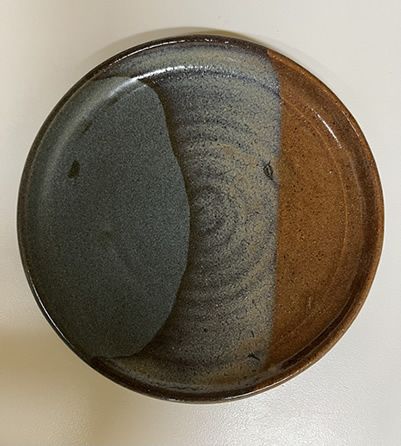 My pottery studio’s impossible to keep clean. Basically, clay’s just fancy dirt. But this summer, even if I can’t finagle spotlessness, I’m determined to organize the space. I’ve already started with my glazes. Some of the glazes I’ve unearthed I hardly remember. But they were buried for a reason. Invariably, they cost a pretty penny, were a pain to mix, and, when tested, proved disappointing. The walnut glaze, for instance. I vaguely recall it fired to a hue less nutty and more brownish blah.
My pottery studio’s impossible to keep clean. Basically, clay’s just fancy dirt. But this summer, even if I can’t finagle spotlessness, I’m determined to organize the space. I’ve already started with my glazes. Some of the glazes I’ve unearthed I hardly remember. But they were buried for a reason. Invariably, they cost a pretty penny, were a pain to mix, and, when tested, proved disappointing. The walnut glaze, for instance. I vaguely recall it fired to a hue less nutty and more brownish blah.
I’ve gotten into the habit of sticking with my tried-and-true colors: stormy blue, fog,
green, chambray, chocolate, cream, Mediterranean blue, and speckled white. But having dug out the old glazes, I’m now wondering if I judged them too harshly and hastily. Even though their
test tile results weren’t impressive, it’s possible they’d pass muster if paired with other glazes. After all, I rarely dip a pot in a single color, and the glazes I think of as my favorites have charmed me because of the magic they effect in certain combinations. Stormy blue and fog, for example, pair nicely largely because of the bluish iridescence that emerges where they overlap.
I think it’s time I give those rejected glazes another shot and see if they’re less boring when combined with other colors. Maybe I’ll find certain pairings attractive. Maybe I’ll even discover some intriguing third hues in the overlaps.
Writing, too, requires experimentation, and frequently, the tinkering involves incorporating more: that extra band of color. This addition might be a character. Two characters’ love for each other is all well and good, but it becomes much more interesting when a third party—the visiting friend, new neighbor, former husband—triangulates their desire, churning conflicts and inviting imitation and competition. The “more” might be an unspoken thing, like an indiscretion never mentioned outright but implied through the fragile nature of a couple’s interactions. It might be a grave loss or a fortuitous find. A shift in perspective. Strange new setting. Dangerous secret. Leap in time.
What intrigues me about the act of adding something singular to a narrative is how the addition engenders restrictions—and then how the restrictions bear fruit. Rather than making the narrative rambling and unwieldy, adding something more can create structure and specificity. Such moreness can define the desire, cull the conflict, winnow the options, and pare the goals. In short, it can impose limitations, constraints that paradoxically free the writer’s imagination and propel the narrative. Suddenly, rather than a wide, endless sea of this happened, then this happened, then this happened, there is a terrific, isolated storm: complexity and urgency.
When I’m dissatisfied with a story I’ve written, it’s usually because the story is too one-note; its flatness, the result of insufficient layers. It doesn’t feel whole or convincing. A good story renders life in a way that resonates—rings true—and true life is never singly glazed. It is a sometimes-wonderful and frequently-anguish-inducing kaleidoscope. It is hues that juxtapose and mix. Conflicts threaten. Complications abound. But on occasion, so does harmony. And if we’re especially lucky? Iridescence.

This really hits! “life is never singly glazed.” So very true. Thank you for this, Melissa!
Rebecca, thank you for reading and commenting on my post! Happy writing, friend.